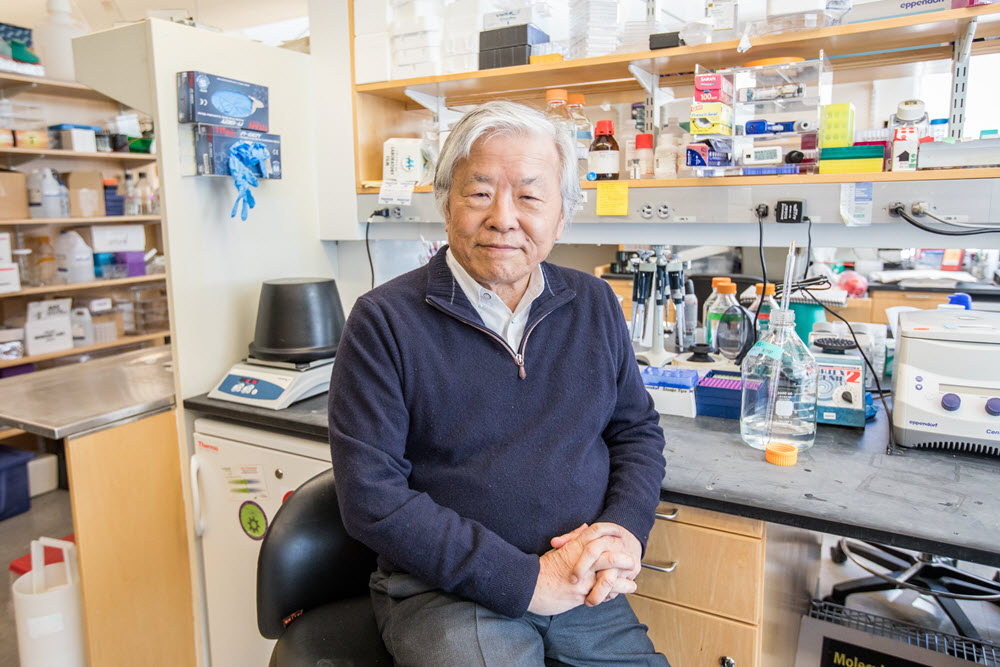
Exploring the principles of episodic memory
Nobel prize laureate Susumu Tonegawa describes his work in memory research over the past decade

“Since Ancient Greece, people have believed that memory is information that comes from what one experiences and then stores in the brain: that this experience, this episode, changes something physically and chemically in the brain,” explains Susumu Tonegawa. “The big question that we answered was: is this theory correct?”
Tonegawa, winner of the 1987 Nobel Prize in Physiology or Medicine, is the director of the RIKEN-MIT Laboratory for Neural Circuit Genetics at the Massachusetts Institute of Technology in Boston, USA. He is an expert on the neurological principles of learning and memory and was invited as a keynote speaker for the EMBO | EMBL Symposium ‘Probing Neural Dynamics with Behavioural Genetics’, which took place at EMBL Heidelberg in April. After finishing his lecture, he sits in an empty room one floor above the crowded foyer of the Advanced Training Centre and explains what has changed in his research field since his last visit to EMBL in 2010.
An important event for neuroscience in the last decade was finding proof of the engram theory, Tonegawa explains. This theory was formulated in 1904 by the German memory researcher Richard Semon in his book The Mneme. Semon used the word ‘engram’ to describe physical and chemical changes in the brain network that encode memories. In order for the engram theory to be correct, three principles must be fulfilled: brain cells must be activated by an experience, undergo lasting changes caused by this experience, and it must be possible to retrieve the memory of the experience. An encounter with a similar stimulus, like a smell, can reactivate the changed neurons and trigger the memory.
“Our lab found a population of cells in the hippocampus which satisfied these three conditions for specific memory: activation by experience, enduring changes in those cells and then reactivation of those cells,” says Tonegawa.
By artificially stimulating certain brain areas in a mouse, it was possible to trigger the memory of a negative experience the animal had undergone and cause a fear reaction. “Our key discovery here is that it is possible to artificially mimic a mental process,” Tonegawa explains. “The three conditions set out in the engram theory of memory are satisfied by our set of experiments: Semon’s engram theory is correct.”
This artificial triggering of memories also opens the door to medical applications, for example the stimulation of positive memories to fight depression. This, however, has only been tested in mice, as the process is still too invasive to be carried out in humans.
Studying memory engrams also shows that assumptions about Alzheimer’s disease need to be re-evaluated. It was believed that Alzheimer’s inhibits the brain’s ability to form memories. Research in mouse model organisms shows that memories can still be formed, but not retrieved. Artificial stimulation of marked engrams in the hippocampus triggered fear responses in mice with early Alzheimer’s disease, showing that a fear-based memory had been formed and could be accessed artificially.
“It’s possible that in the future there will be a new type of therapy that doesn’t depend on drugs,” says Tonegawa. “Chemical therapy works, but there are all these side-effects, and also patients vary in their susceptibility to certain medications. I’m sure that physical therapy would also have side-effects, but a different kind. Therefore it might be possible to combine chemical therapy with physical therapy, in a way that means more people can be treated.” As Tonegawa explains, this form of therapy would require further technological advancements in brain cell manipulation, based on fundamental memory research.
“It’s important that we show the public how important fundamental research is,” says Tonegawa. “We have to find out what’s going on in the brain, independently of potential applications. If you need to find a therapy for an abnormal brain, first you need to know how a normal brain works. That’s fundamental research, like most of the work done at EMBL. The value of fundamental research can never be emphasised enough. You can’t just come up with a new therapy by magic.”


